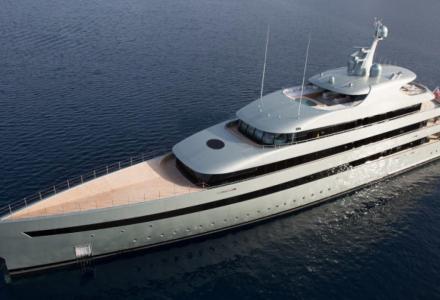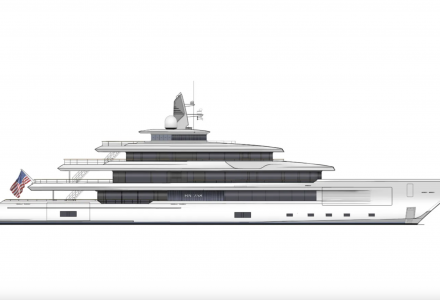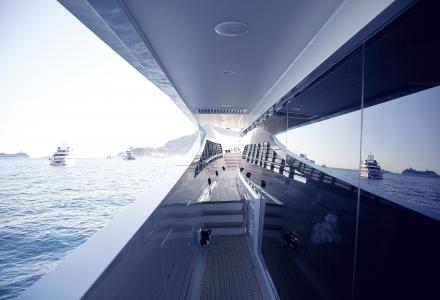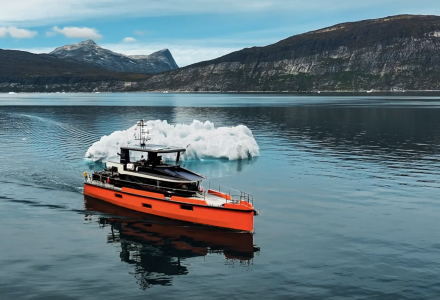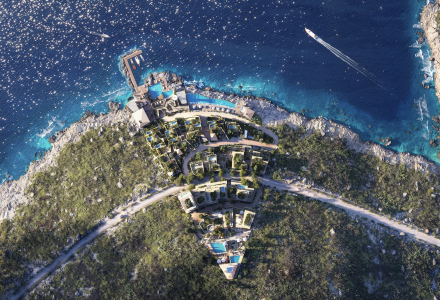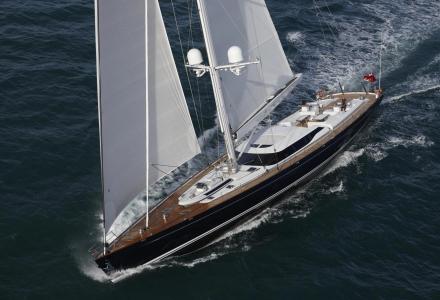Launched in 2015 by Feadship in the Netherlands, the 83.5-meter Savannah became a landmark project for her shipyard, becoming one of the first true representations of a hybrid superyacht. With features such as an underwater observation room and a 9-meter swimming pool, the yacht was recently made available for charter from €1 million per week.
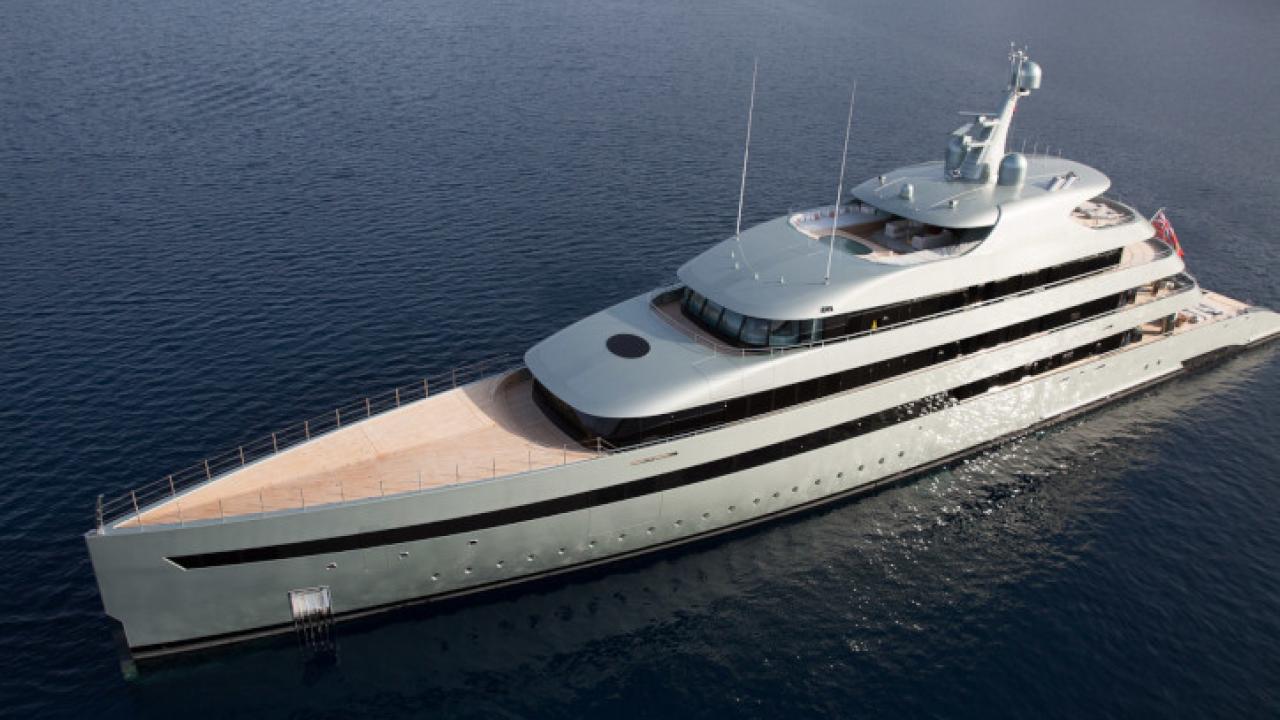
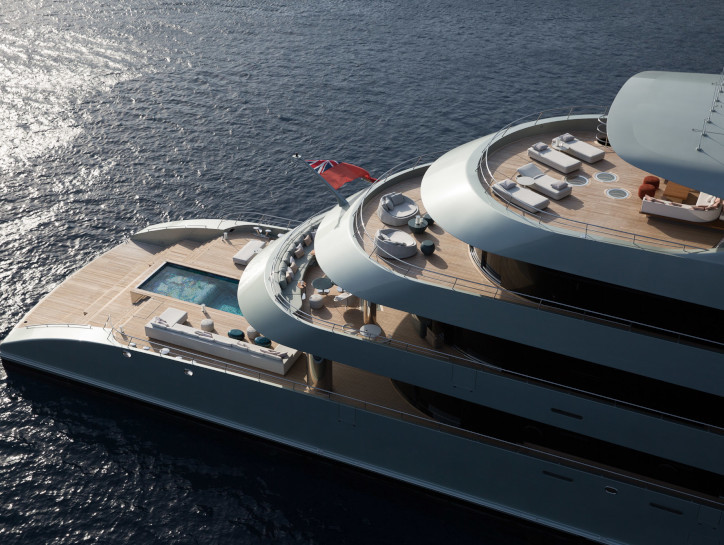
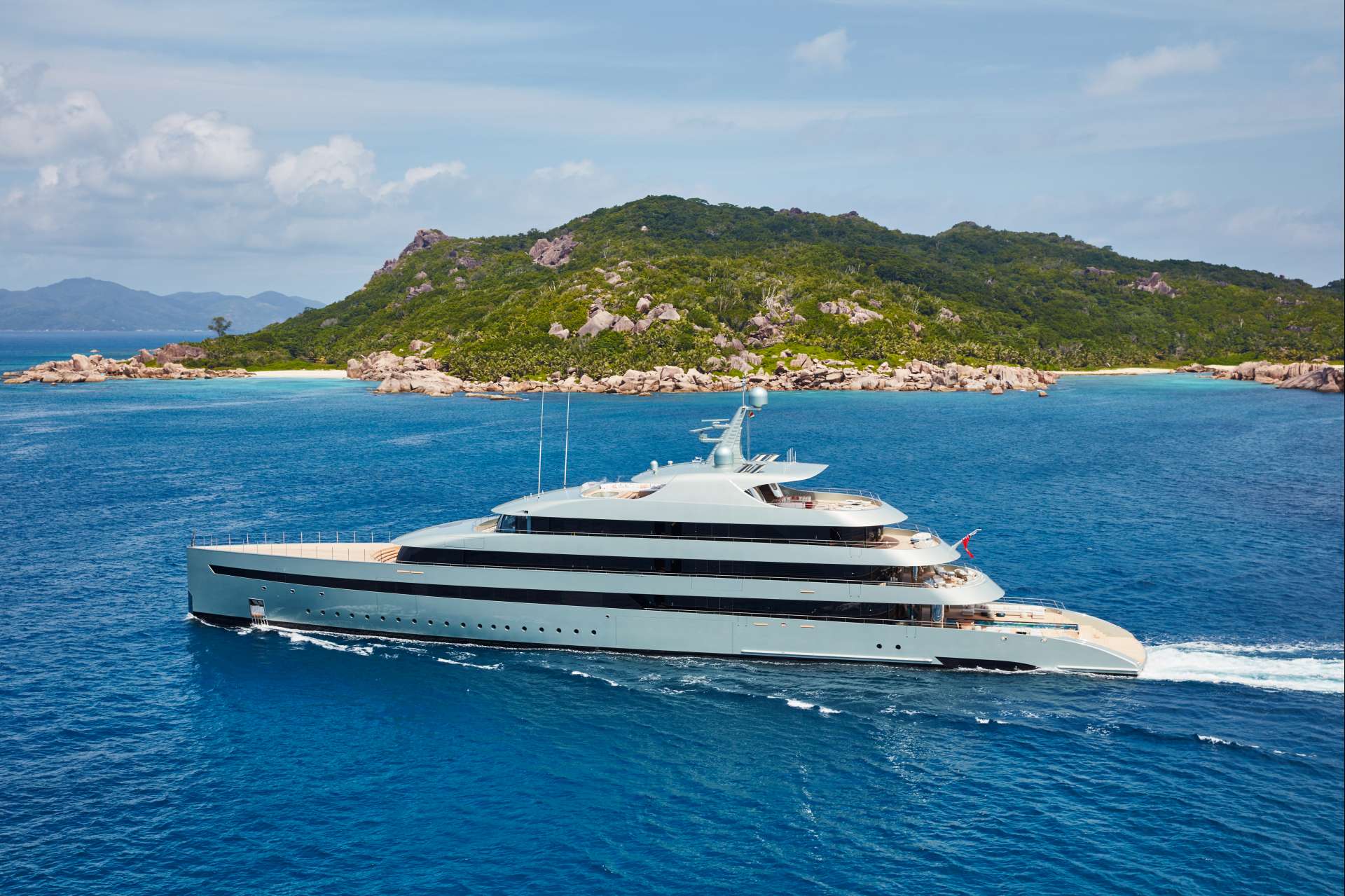
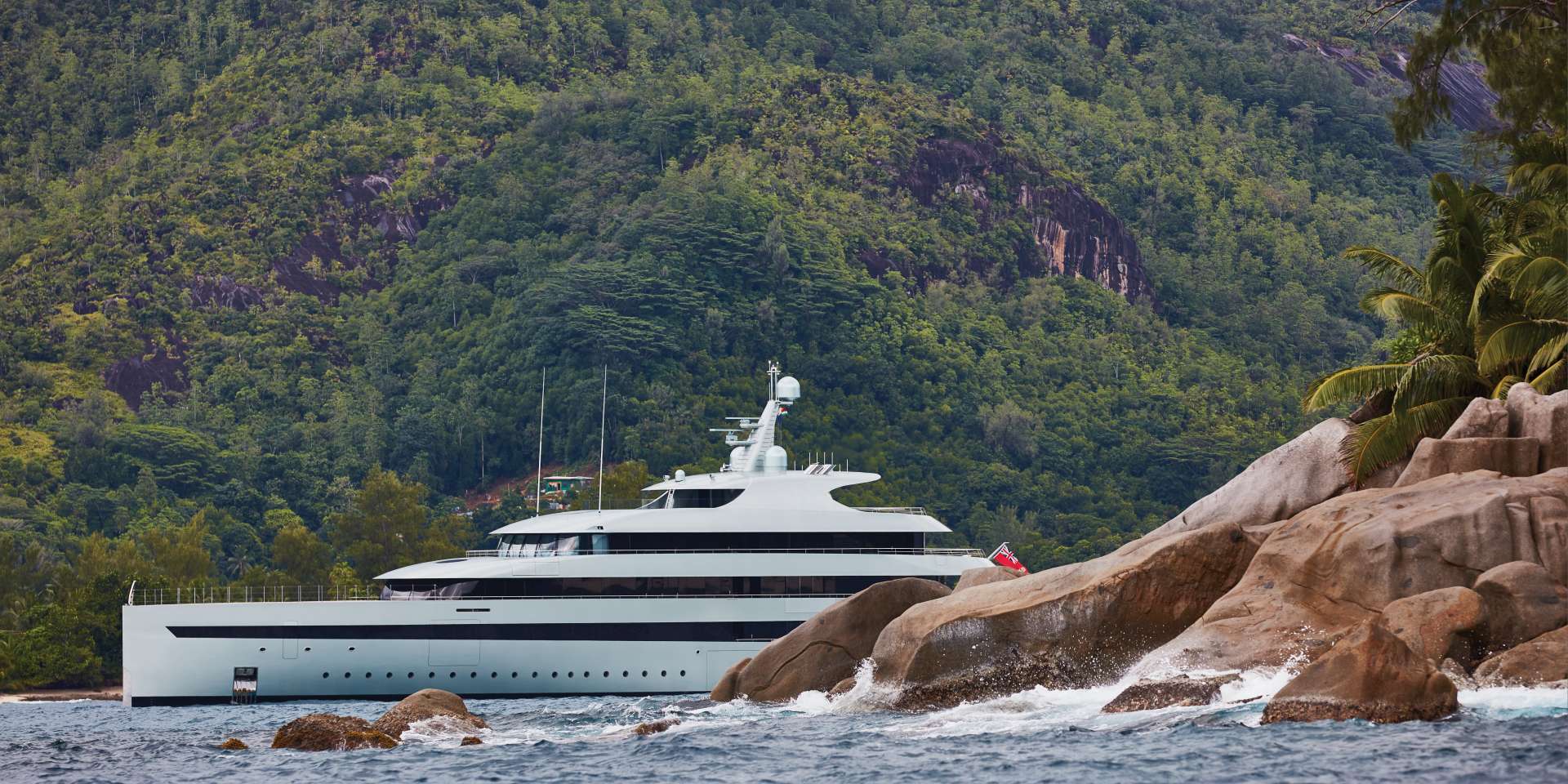
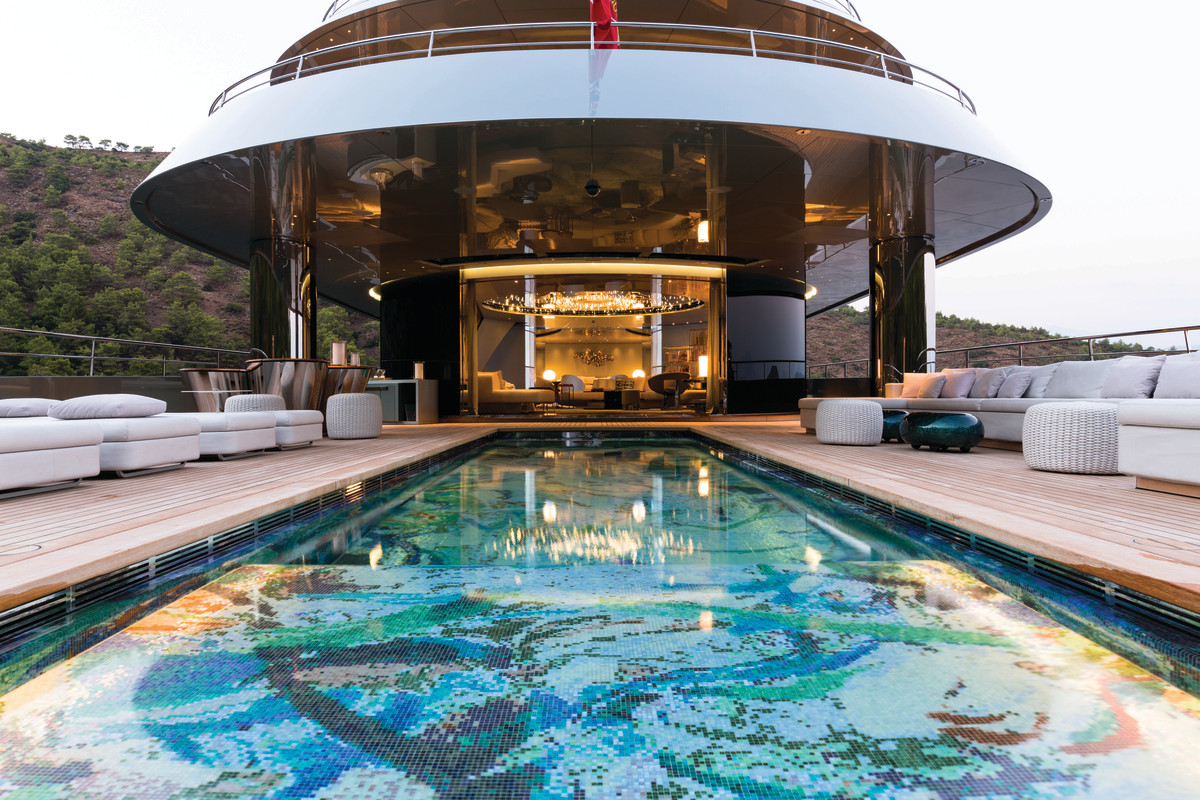
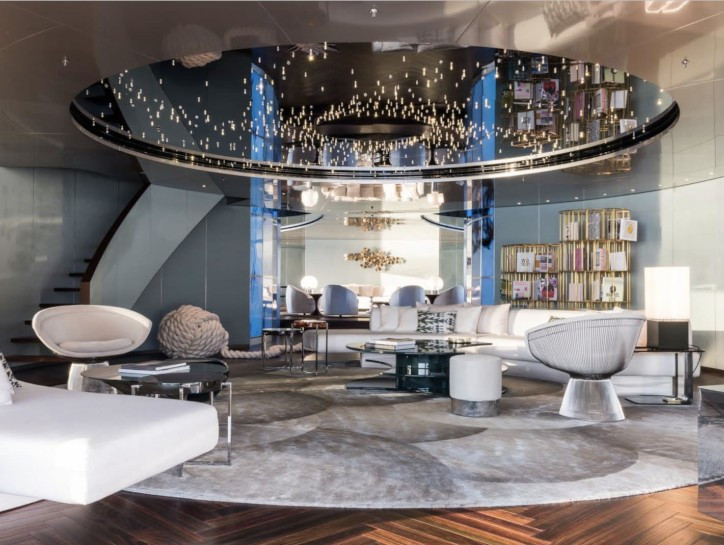
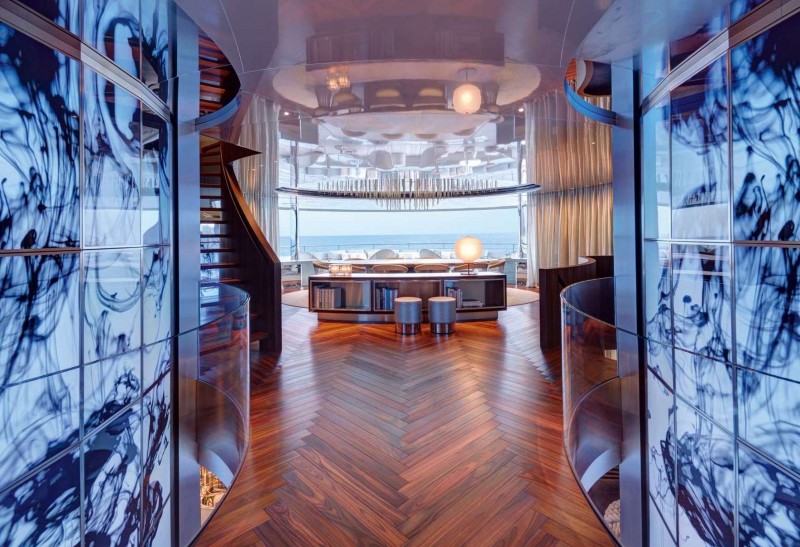
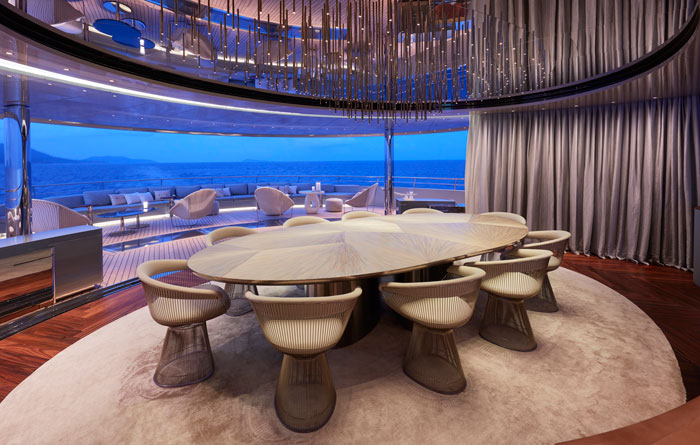
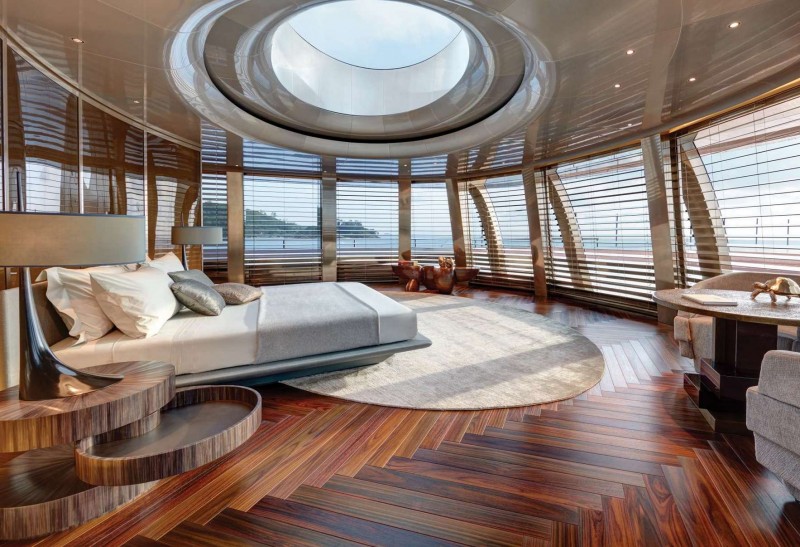
Built as a separate room, adjacent to the entrance to the master stateroom, the owner's study features floor-to-ceiling windows, not unlike other areas on Savannah, as well as a fully-stocked library and lounging area.
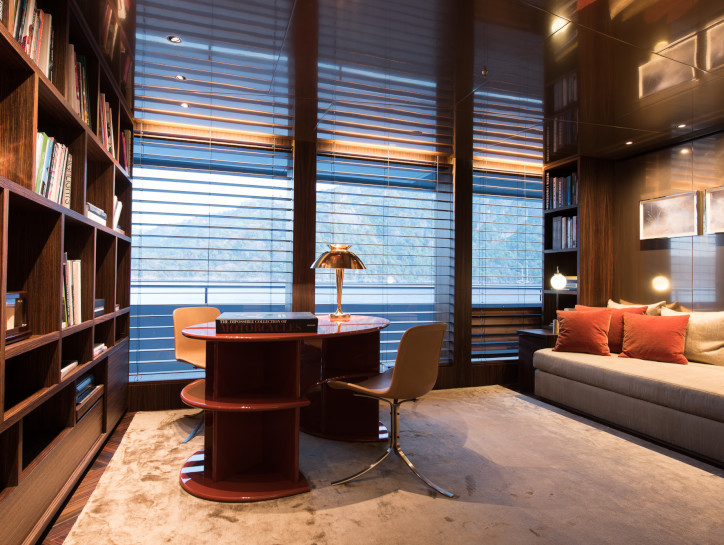
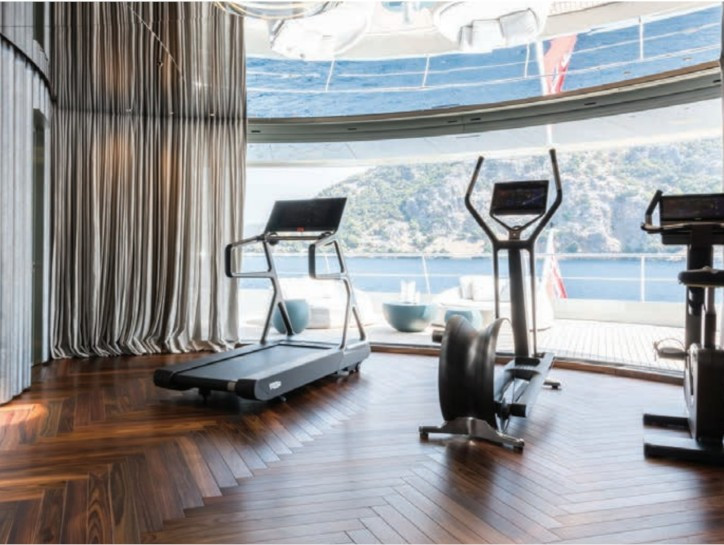
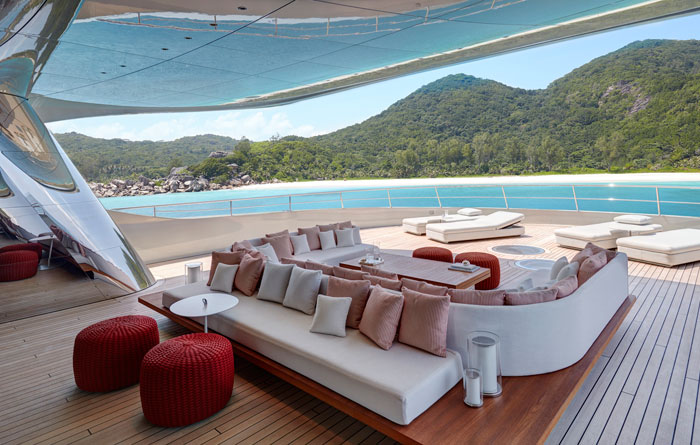
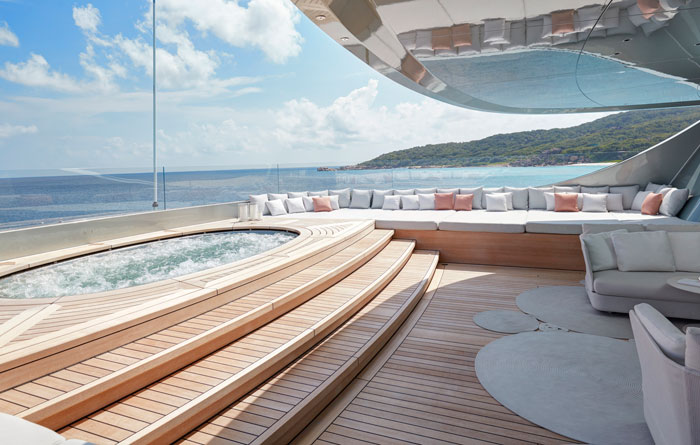
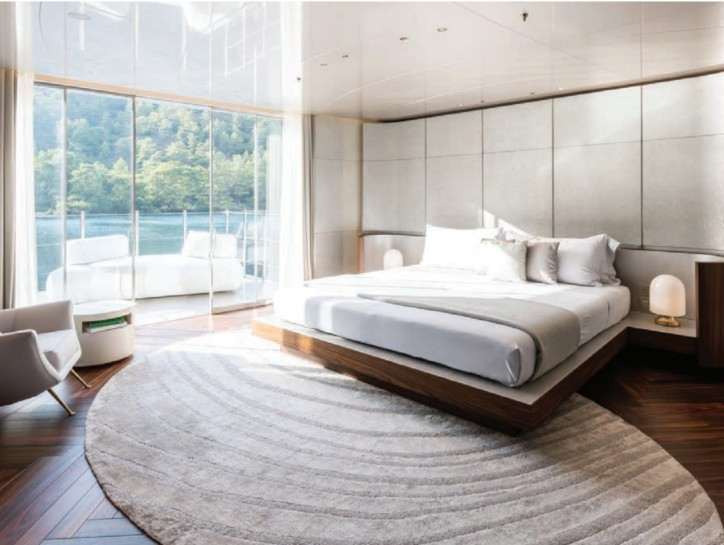
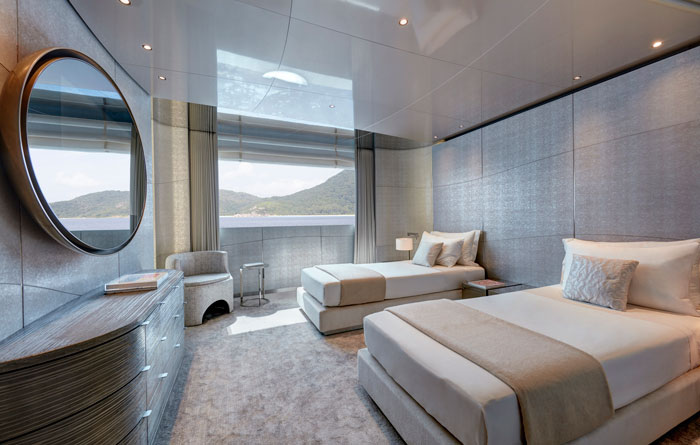
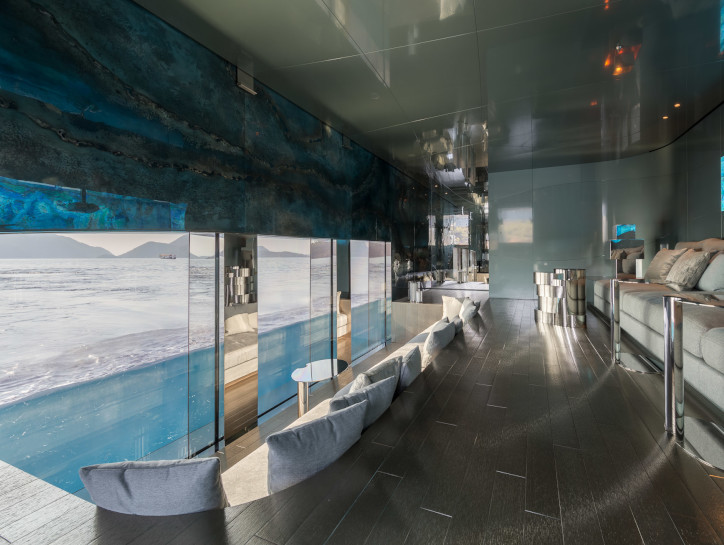
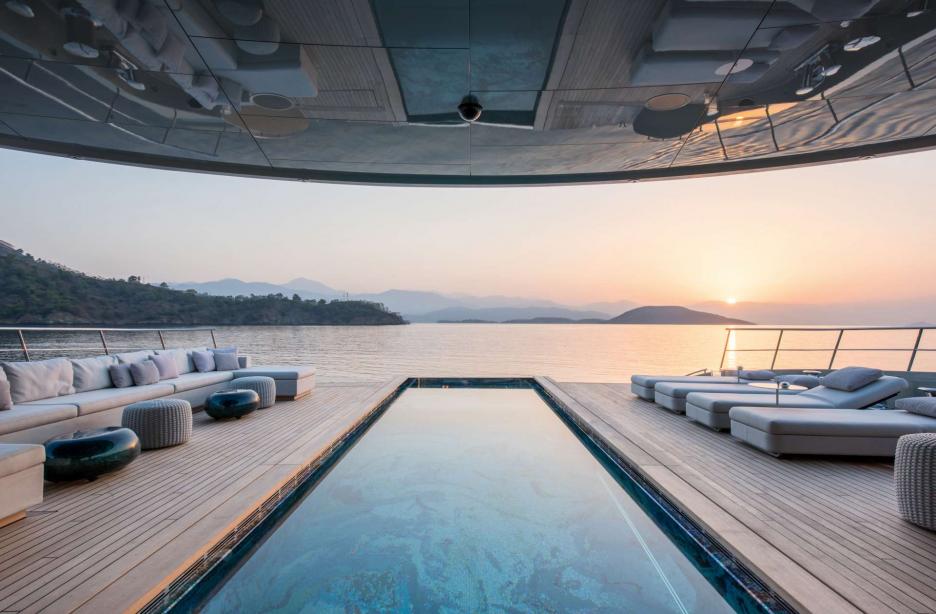
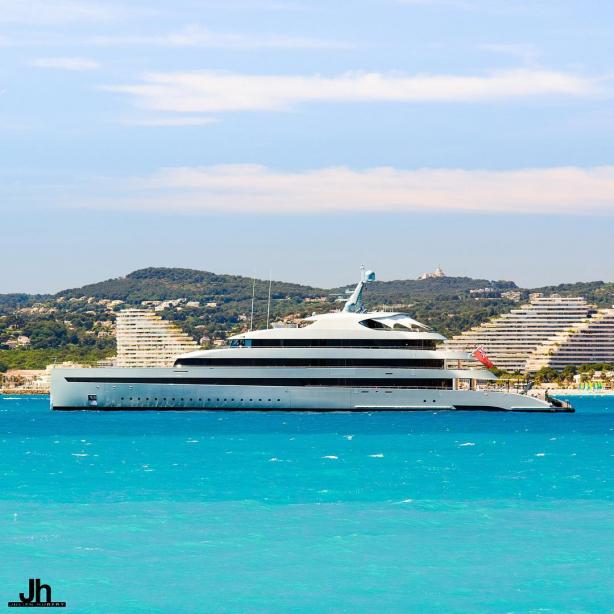
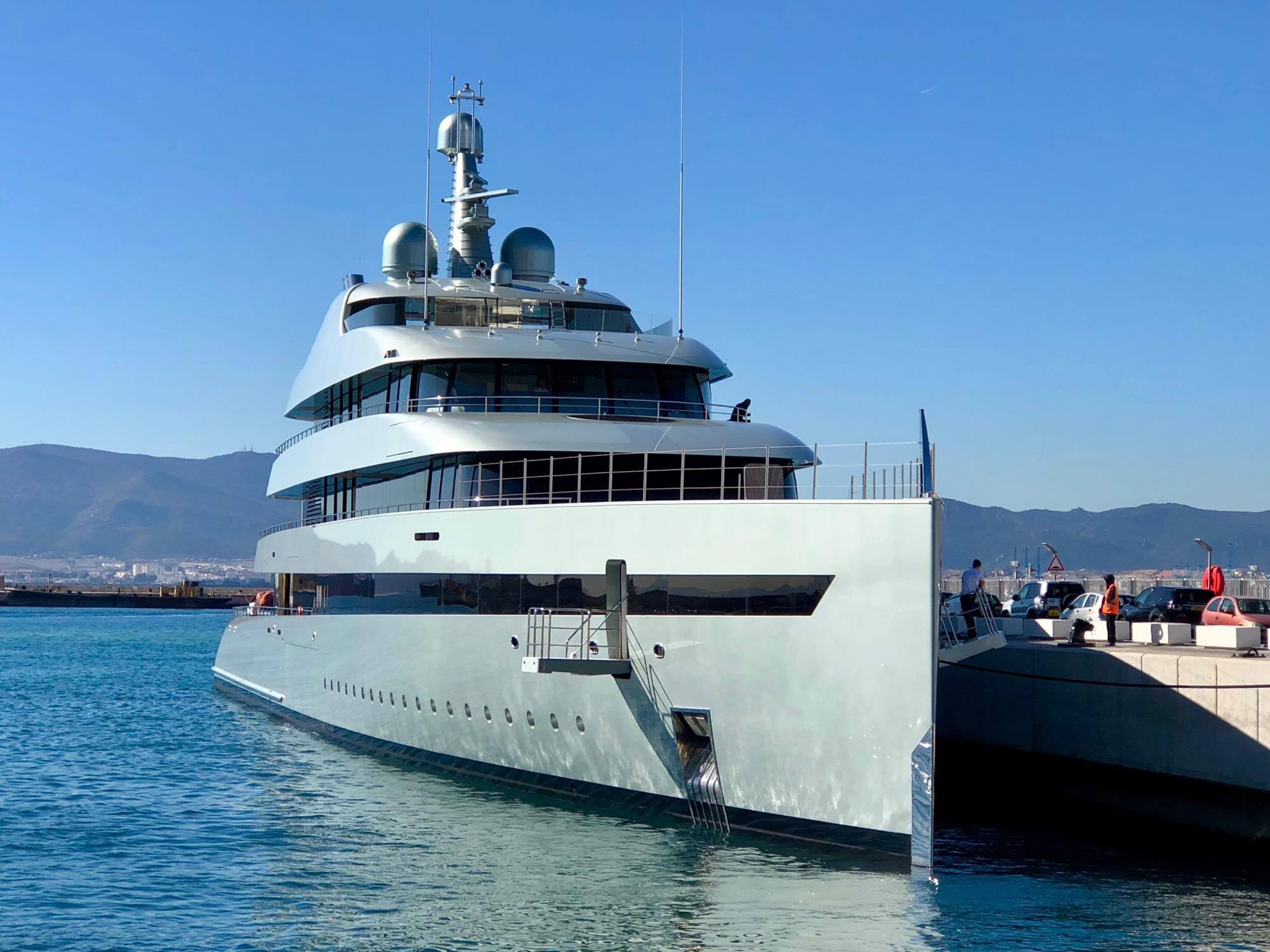

Built for Swedish billionaire, Lukas Lundin, according to the New York Times, Savannah boasts the first hybrid propulsion system implemented on a yacht of this size.
Built under the codename Monkey Business, Savannah stretches across a beam of 12.5 meters, the widest possible measurement that allowed her to cruise out of the shipyard and into the sea through Dutch canals. Straying away from classical Feadship lines, Savannah's rounded shapes were drawn by CG Design, the second superyacht the French studio ever designed.

Having designed the interior of Lundin's previous yacht, a 49-meter Christensen named Odessa, the French studio aimed to look at yacht design in a different way. The result was the creation of spaces such as the underwater observation lounge, a secret room in the bow and a customized interior layout.
"It is not the individual technologies used on Savannah that are new in the yachting world - it is the way they have been combined." detailed the owner's project manager, Ted McCumber at the time of her delivery.

Prior to Savannah, hybrid superyachts had long been an ambition for various shipyards but the yet unproven technology was failing to attract enough attention from clients to warrant them venturing into nine-figure yacht construction projects on a dream.
This all changed in 2011 when Lundin placed an order with Feadship to build the 83.5-meter Savannah. Initially skeptical to implementing the propulsion technology that would set Savannah apart, Lundin reportedly had his engineer ride several passenger ships in Japan where a similar technology had been installed to test it out on the seas.
Featuring five different operating modes, from diesel to fully electric, Savannah features a 30-tons lithium battery bank capable of holding up to 1 million watts of electricity. Using best of both worlds, Savannah can reach a cruising speed of 18 knots in diesel-electric mode.

Savannah's main salon is purposely located on the same level as her 9-meter swimming pool, to create a gigantic open space on the main deck. Should guests open the weathertight doors, which get stacked invisibly on the side, a virtually natural transition between the indoor salon and the outdoor swimming pool takes place.
Low lounging furniture located all around the swimming pool create an ideal location for sunbathing, whilst at the same time letting guests experience an untampered view all around from the mosaic swimming pool. Railings have also been built in such a manner to keep an open view.

Inside the main deck, the circular layout theme continues with round shapes found in a variety of places. From the light spread on the ceiling to the concealed staircase on the side to the shapes of the carpets and furniture, the circular theme spreads throughout the main deck lounge.
Another noticeable detail is that instead of cutting through rooms in a straight line, corridors flow throughout the layout of the yacht in curves, mimicking the shape of a wave and the sea as they spread through the 83.5-meter yacht.
"When we were in design meetings, [the designer] would turn to me and ask if there was a 'nautical reason' for things - straight hallways and square rooms for example. If we'd say no, she'd say: 'Good, let's do it a different way.' There was not one detail she would not spend days going over to make sure Savannah was perfect. She really pushed the yard with her design to build the best possible yacht for the owner" McCumber explained to BI.

In between the main salon and the upper deck lounge are two tall, video screens built into the wall that feature abstract video art that spreads across the decks. "It was hard work designing and implementing" Gherardi, the designer, explained BI "but it was worth the effort. It creates movement, a view in a space which is normally stale".

The lighting installed onboard the 83.5m Savannah is amongst one of the most complex ever built on a yacht of this size. Developed by Milan's Metis Lighting, some elements of Savannah's lighting scheme feature up to 10 different colors, lenses and positions. The yacht's exterior strip lighting was on the other hand developed by Total Looks. Although the yacht is very bright by day, at night she takes on an almost mysterious look thanks to her lighting choices.
Past the tall video screens is located the yacht's main dining table, capable of comfortably accommodating all 12 of Savannah's guests. The same outdoor to indoor transition that guests would see on the main deck can also be spotted on the upper deck, as seemingly endless windows can be stacked away to open the area completely onto the outside lounge, perfectly suited for cocktails.

Forward on the upper deck is the owner's stateroom. Offering an unparalleled, 180-degree view as the yacht cruises forward, the master stateroom basically translates to an owner's deck, complete with a study and lounge. To offer even more light, a glass feature was installed into the suite's ceiling.


Up on the third deck starts a transition to a wellness area with a well-equipped gym located aft of the deck with the same transition from outdoor to indoor as guests previously had found on lower decks. A unique opportunity to exercise with an unbeatable view whether underway or at anchor.

A space dedicated for relaxing in the summer sun, Savannah's sundeck features extensive space for lounging. Sunbeds are located aft of the deck, with a lounging area, which could be used as a casual dining spot protected by shade from Savannah's roof.

Forward of the sundeck can be found even more lounging space protected by a shade as well as extensive areas for sunbathing on the sides of the yacht. Towards the bow is a hot tub that seamlessly blends into the deck with no railings around and nothing to block an incomparable view.

In addition to her owner's stateroom, Savannah features five guest cabins bring the total number of guests to 12, catered to by a crew of 24. Located down on the main deck, guest accommodation is split into two twins, two guest cabins and one VIP cabin with a foldable balcony.

Featuring a light set of colors, Savannah's guest cabins continue the yacht's circular theme through round shapes found in various setups throughout the guest accommodation. Another aspect that's also replicated in these staterooms are the large windows found in every cabin.

Savannah's most standout feature, even perhaps surpassing the novelty of her inspired hybrid propulsion, is the so-called Nemo room. Letting its guest look out into the sea from a stadium-like layout, the room features unquestionably one of the best views onboard with the ability to watch sea life from the comfort of an 83.5-meter superyacht.
Accessible from main deck aft, the underwater observation lounge also doubles as a cinema with a giant screen dropping down from the ceiling and transforming the area from a place to stare at the depths of the ocean into a fully-functional cinema.

Lukas Lundin was born in 1958, the son of Adolf Lundin, a Swedish entrepreneur that established several businesses with the natural resources space and made his first breakthrough discovery of an oil field in Qatar in the 1970s.
Graduating from the New Mexico Institue of Mining and Technology in 1981, Lukas Lundin held a variety of high-profile position in the petroleum sector during the 1980-90s. Through his tenure at those ventures, he participated in a number of 9-figure takeovers of gold and oil businesses.

Ranking simultaneously on the list of richest people in Sweden and in Canada, due to his dual citizenship, Lundin has an estimated net worth of $2.5 billion combined with his brother Ian, who runs Lundin Petroleum. He competed four times in the famed Paris-Dakar race, finishing it twice.
The Lundin's family mantra, according to the international press, has been "no guts, no glory" ever since Adolf Lundin started his first company in the natural resources space. One such move was the Lundins investing $12 million in an Argentinian copper asset in 1992 during a period of instability, selling it for $500 million in 1995.
According to Lundin, success in the natural resources space requires 3 things. "First — risk-taking. Second — you have to be a giant optimist. Third — you have to be willing to go out there and do it. It’s easy to sit on a couch and talk about it, but then you have to actually fly to some crazy place and pick up the concessions and develop them." he said in an interview to CEO CA in 2013.

In recent years, Lukas Lundin has been most famous in the business community for his ability to discover natural resources using sometimes unconventional methods by granting its employees more freedom to test out new ideas.
Lundin Petroleum, for example, discovered near 2 billion barrels of oil in an area that had previously been drilled without success. Lundin believes this resource alone is worth $12 billion.
Lundin has also been hailed for his repeatedly impeccable timing, allowing for tremendous exits in the space that have yielded his shareholders colossal returns. In 2010, the Lundin Organization sold their Red Back Minning company to Kinross gold for $9,2 billion, generating a 1041% return for shareholders. The acquirer, Kinross, eventually had to write down billions as a result of this transaction and ultimately its CEO, Tye Burt retired early.

Lundin pushing the yachting industry forward with the delivery of Savannah comes as the Scandinavian region, in general, has been recently becoming a powerhouse in the superyacht space.
